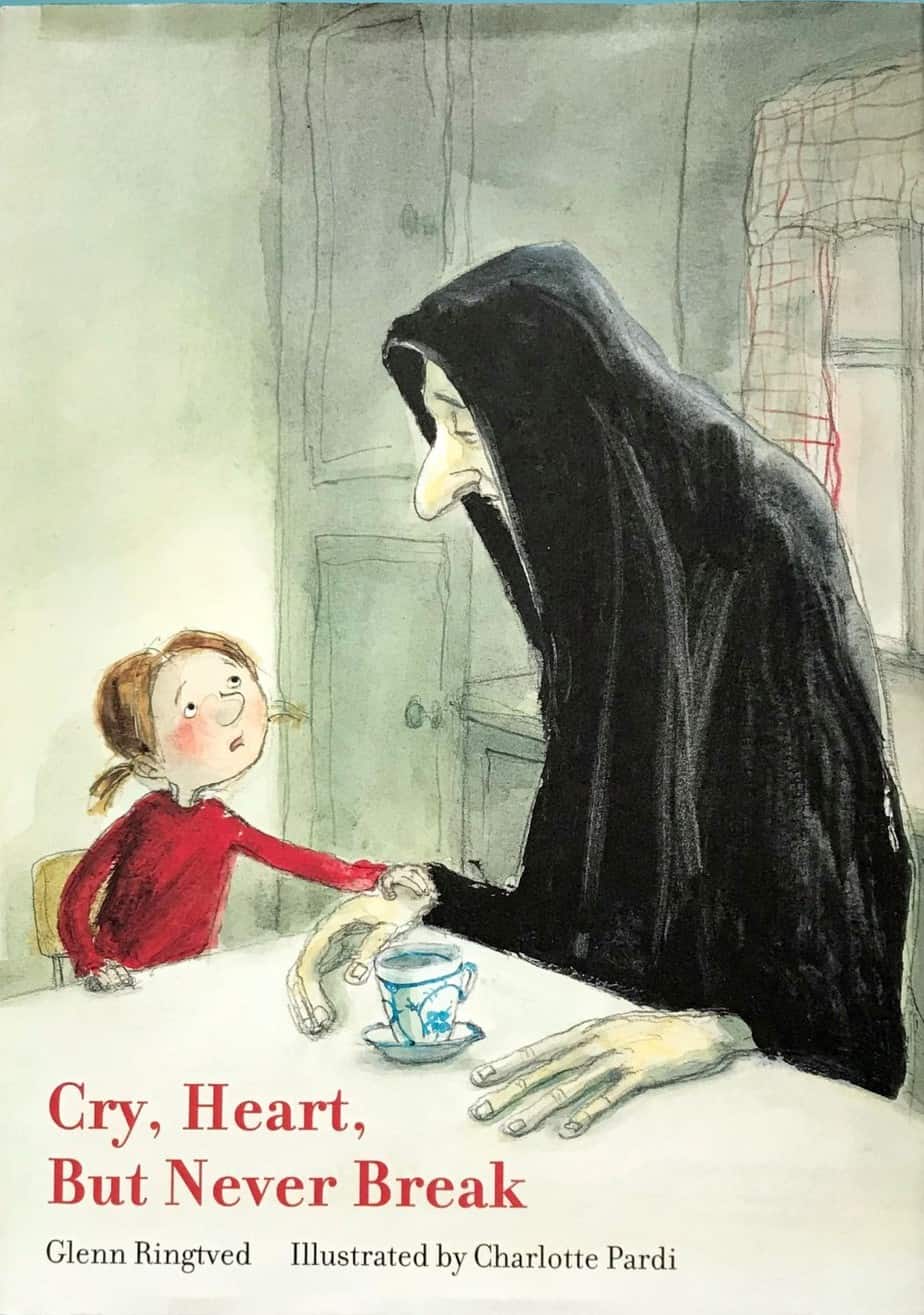Cry Heart, But Never Break is a picture book to help children process their grief. The book was first published in Denmark in 2001, then translated into English by Robert Moulthrop five years later. The story is beautifully illustrated by Danish artist Charlotte Pardi.
I recommend this book for children of all ages dealing with grief or contemplating death. I found it moving and can’t imagine how much more moving it would be if I’d just lost someone.
SETTING OF CRY HEART, BUT NEVER BREAK
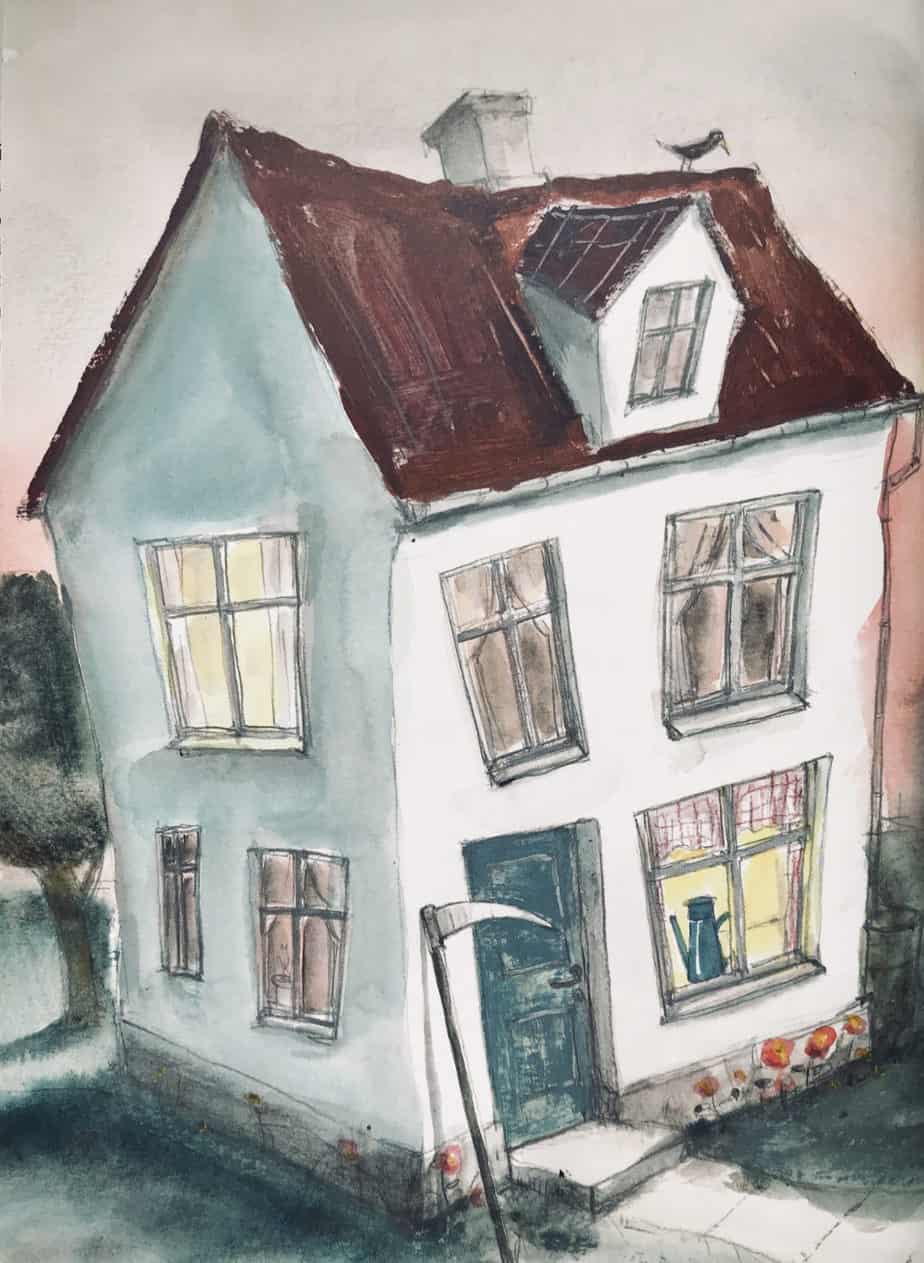
- PERIOD — This picture book contains a story within a story. The wrapper story takes place over a day or two, though the time isn’t specified. This makes sense. It has been noted that time takes on a different quality in hospitals, when you’re waiting for a loved one to die.
- DURATION — The metadiegetic story takes place over an entire lifetime. This narrative technique is common to idyllic fiction. You’ll find it in Winnie-the-Pooh. The idyllic story is designed to soothe. Though this story is about death, it aims to soothe the bereft, or the child thinking about death, perhaps for the first time. Not surprising, then, to see the techniques of idyllic fiction utilised here.
- LOCATION — The story takes place in a small cosy house basically in the middle of nowhere. This is hard to explain if you haven’t seen this picture book setting. If you like Charlotte Pardi’s illustrations (I do, very much) you may also like the illustrations of Birgitta Sif, who creates a similar world and I wonder if this kind of storyworld is Northern European. Pardi is from Denmark; Sif is originally from Iceland. But there is something very similar about the storyworld. Compare this story with Sif’s Oliver. Speaking of Olivers, Oliver Jeffers has a similar style, and is originally from Northern Ireland. What do Iceland, Denmark and Northern Ireland have in common? An idyllic mindscape with cosy houses which are very much alone in a mountainous landscape.
- ARENA — We have no sense of the world beyond the houses.
- MANMADE SPACES — Just houses. The very first page tells us this is a cosy house. The illustrations use colour to reinforce this idea, with reds and warm tones on the inside, blues beyond the window panes.
- NATURAL SETTINGS — mountains are the dominant feature of this setting, with steep, exaggerated proportions. Typically, mountaintops are where revelations happen. The mountains also form these bumps which isolate people from each other, geographically as well as psychologically. That’s what’s happening here as well.
- WEATHER — pathetic fallacy is avoided in this one. The illustrator could have made it rain, but that would have interrupted the landscape functioning partly as dreamscape.
- TECHNOLOGY CRUCIAL TO THIS PARTICULAR STORY — Nothing notable here. That said, the scythe symbolism
- LEVEL OF CONFLICT — the story’s position on the hierarchy of human struggles. If ‘time and place’ refers to temporal and physical location, this refers to the social one. What’s going on in the wider world of the story, politically, socially, environmentally…? A ten dollar word to use here is ‘milieu’.
- THE EMOTIONAL LANDSCAPE — The landscape that lives inside the children of this story plays out in the geographical landscape. (The emotional/imaginative landscape refers to the difference between what is real in the veridical world of the story and how a character perceives it — never exactly as it is, but rather influenced by their own preconceptions, biases, desires and personal histories.) There are four children in this story, each at a different developmental stage, though the illustrations don’t make a bit thing of their age differentials. (They’re all about the same size.) The youngest child stares death directly in the eye, and the adult reader knows this is because she’s not quite old enough to understand the finality. That accounts for her bravery. The children see death as a wholly bad thing, which is where this picture books hopes to prove them wrong, teaching instead that without death we would not appreciate life.
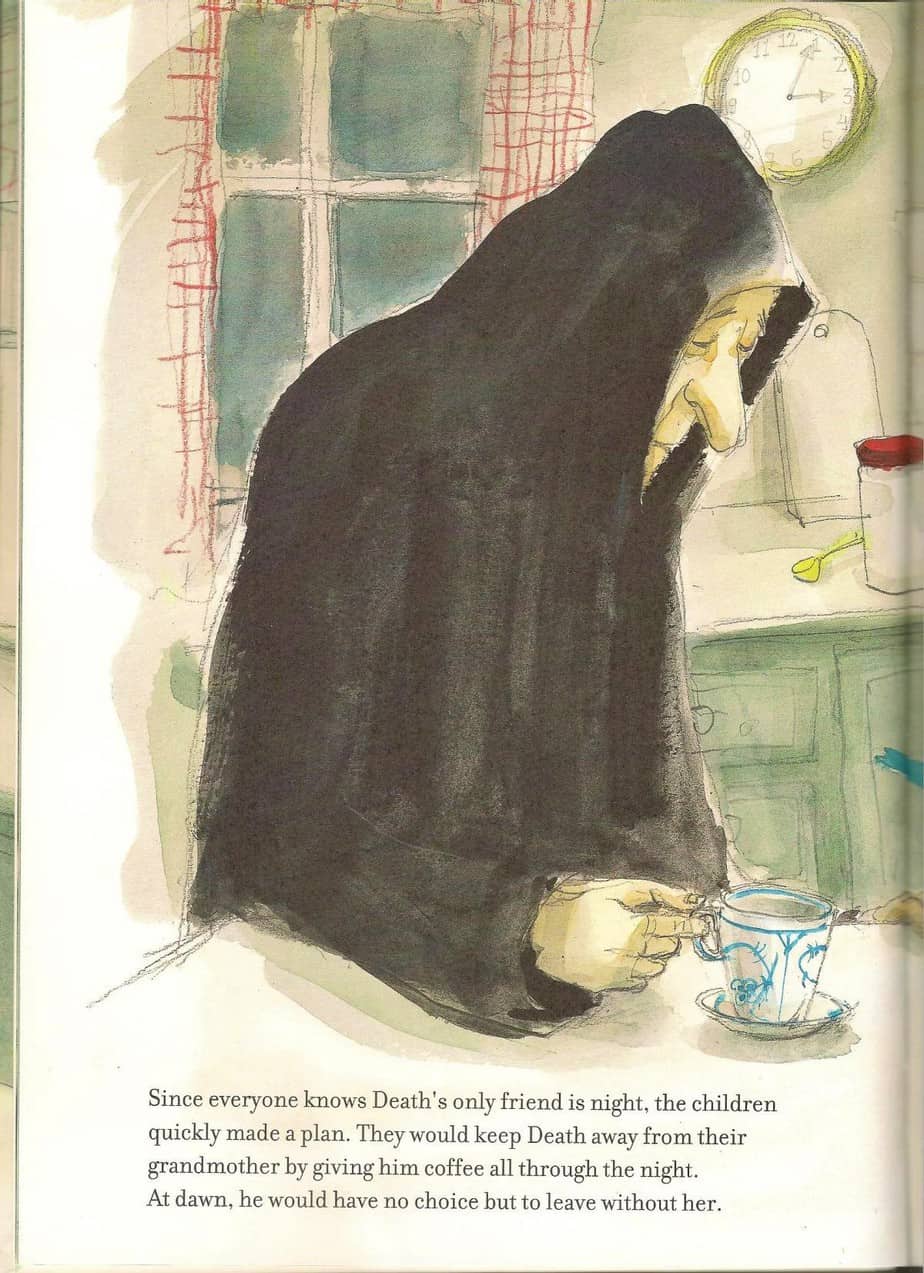
STORY STRUCTURE OF CRY HEART, BUT NEVER BREAK
PARATEXT
Aware their grandmother is gravely ill, four siblings make a pact to keep death from taking her away. But Death does arrive all the same, as it must. He comes gently, naturally. And he comes with enough time to share a story with the children that helps them to realize the value of loss to life and the importance of being able to say goodbye.
*
This warmly wistful story begins outside the “small snug house” where four children live with their beloved grandmother. Not wanting to scare the young ones, Death, who has come for the old lady, has left his scythe by the door. Immediately, in this small and enormously thoughtful gesture, we are met with Death’s unexpected tenderness.
two different paragraphs of marketing copy
SHORTCOMING
The children don’t know how to process grief. Notice how there are never any parents or other adults in this story. Instead of getting them out of the way, they never existed. We deduce the grandmother has been looking after these cousins.
Whereas I figure these kids each represent a different stage of development, another reviewer figures the kids each represent a different stage of grief. Both are true, I guess?
I think that one of the most special aspects of this book is that the grandchildren each represent each stage of loss. The youngest child ignores the presence of death, two are filled with with grief, and the other looks straight at death- possibly coming to terms with what is happening. In this, Ringtved shows children that these feelings are a natural part of being bereaved.
Goodreads reviewer
DESIRE
The children don’t want their beloved grandmother to die.
OPPONENT
Unfortunately, death must come for us all. This makes Death an opponent, but although Death dresses in black and carries a scythe, he (or she) leaves the scythe outside the front door to avoid scaring the children.
The storytellers could have chosen a completely novel image to represent Death, but instead stuck with the age-old imagery of the Grim Reaper. This is a great choice, because it subverts the imagery of the dominant culture. If a separate, kinder image of Death had been created specifically for the purposes of this story, the imagery of the Grim Reaper would remain scary as all get out. Now s/he is permanently subverted.
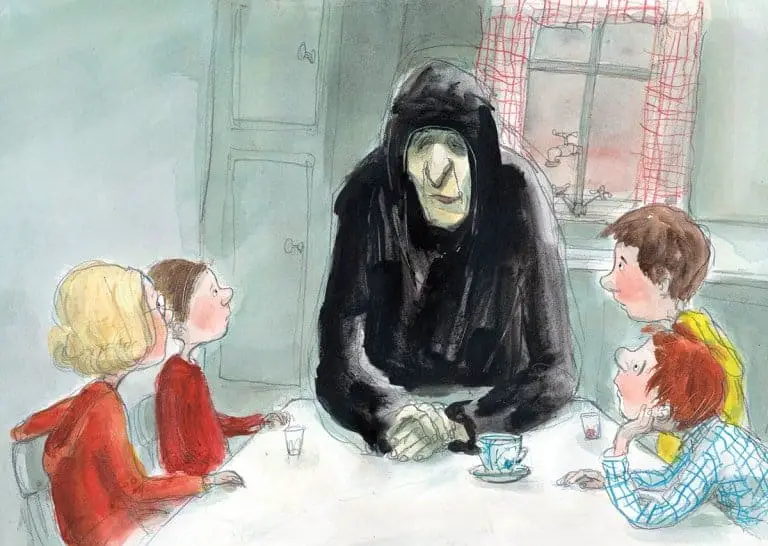
Death is shown to be humane and empathetic, he does not enjoy coming to take life away and is filled with just as much sorrow as the grandchildren. Despite this, he realises that his job is necessary. Death teaches the children and the reader to accept that life and death are a partnership that walk hand in hand. We cannot truly experience life without the presence of death-something that we do not necessarily understand but must allow to happen.
Goodreads reviewer
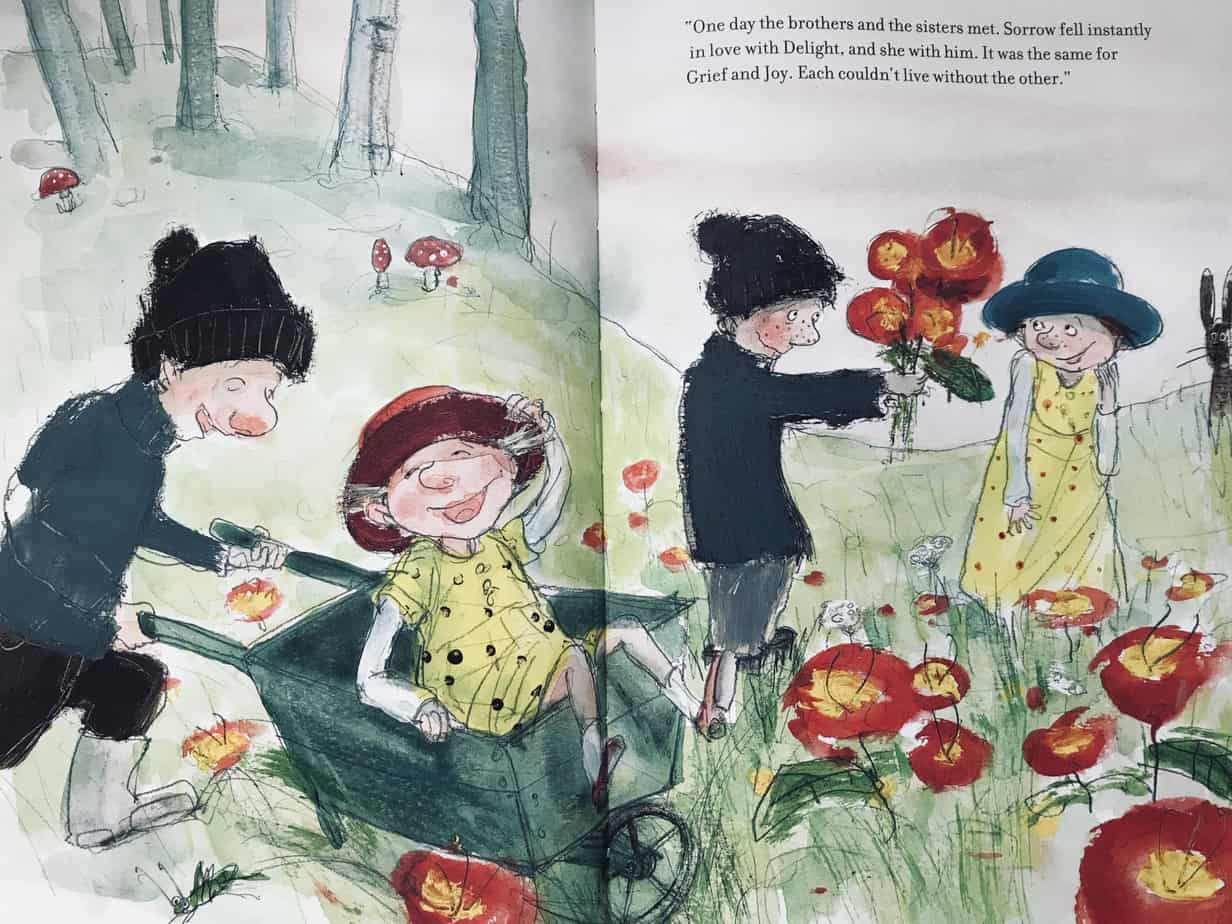
PLAN
The opponent is the one with the plan. The Grim Reaper/Death will reassure the children by telling them a story about how life and death go hand in hand. He will guide them through their grief by telling them it’s okay to cry, and by reassuring them that their hearts will not ‘break’.
THE BIG STRUGGLE
The grandmother dies.
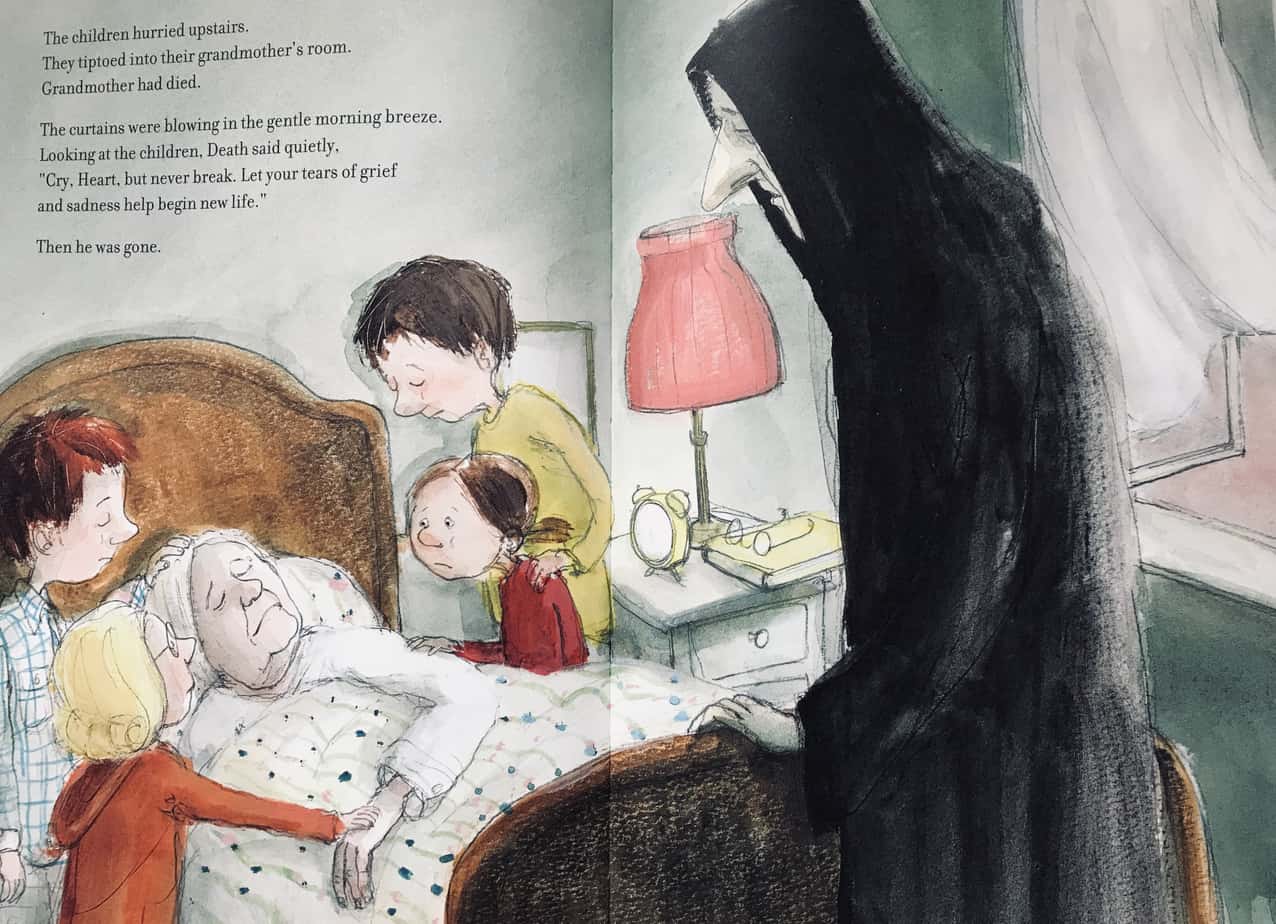
ANAGNORISIS
Grief and life can coexist. People carry grief with them always, but loss does not mean the end of life for the grieving.
NEW SITUATION
This is such good advice that I imagine these children experienced the best grief they could.
EXTRAPOLATED ENDING
The idea that expressions of hard emotion is okay is actually pretty foreign to my own recent ancestors, who are white. This is a how-to-grieve book very much of its time — the 21st century.
We are now seeing in children’s literature more expression of difficult emotion. I recently watched the Australian cartoon Bluey and noticed the emotional honesty of that.
RESONANCE
Children (and older children) are always going to need stories about death. Some have argued that every single story is ultimately about death. If we consider that Life = Death, guess you can’t argue with that, really.
See also the following short film for a similar treatment of Death as a scary-looking yet kind, necessary, empathetic character.
FOR FURTHER INVESTIGATION
Death In Children’s Literature
The Grim Reaper In Art and Storytelling
In my short story Diary of a Goth Girl, I turn the Grim Reaper into a less scary figure for comedic purposes.
